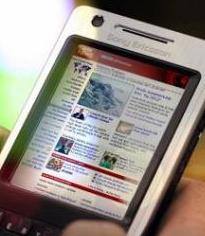 The government and the RBI have made efforts to facilitate provision of financial services to the hitherto unbanked / underbanked areas.
The government and the RBI have made efforts to facilitate provision of financial services to the hitherto unbanked / underbanked areas.
The RBI used the term financial inclusion for the first time in its annual policy statement of 2005-06, Since then the banks have taken several measures for promoting financial inclusion such as advising banks to open ‘no frill’ accounts, introduction of business correspondence (BC)/Banking Facilitators (BF) model, promotion of financial literacy, and adoption of information and communication technology (ICT) solution for greater outreach.
Despite these efforts the current National sample survey data reveals that 51.4% of nearly 89.3 Million farmers households do not have access to any credit either from institutional or non institutional sources. Only 27% of farm household are indebted by formal sources.
Recently RBI has issued guidelines for mobile banking. As we move to the future, I wanted to know the root cause for the failure of earlier efforts and as part of my search I interacted with few stakeholders. Here are some of my InCights from the same.
Small Transaction Size: I found out that the average balance which is maintained in these accounts is just around Rs. 20-30. Now any one who understands how does a bank earn profit would say that this an unprofitable business. With this kind of float in the no frill bank accounts, banks have started considering it as a Corporate Social Responsibility. Most of them operate in rural areas just because RBI has given a mandate. The cost per No frill account is approximately Rs. 160. Banks as well as the BCs have incurred huge losses by adopting this model. The viability of the business is an issue.
Cash Management: Almost all BC transactions are cash based. Handling large volumes of cash leads to increased transactional and operational costs. Technology is other issue. This model works on online or an offline model. According to the RBI guidelines, transactions done by the BCs should reflect in the banks CBS by the end of the day. This is practically not possible. There are areas where there is no or limited connectivity like North eastern regions.
Financial Education: helping the masses to understand these products, and the benefits of saving and investing, RBI as part of its initiative has not done enough to educate the prospective customers through the use of media channels and the same has been left to the BCs/BFs.
Grievance Handling:There is no grievance redressal machinery present in any of the BANKS including SBI for complaints related to BCs. Another problem is that most of the areas have a lot of migrants who come, work and go back. BCs face a problem in these cases too.
Will Mobile Banking be able to deliver on its promises:
Mobile Banking is seen as solution to make of the problems highlighted Above. Globally mobile banking has helped bridge digital divide in countries like kenya, Philippines, Brazil, etc. Moreover usage of mobile based solution reduce both operational and capital costs associated with Brick and Morter Model of setting up physical infrastructure, yet provide any time connectivity to its consumers.
In India according to RBI guidelines the mobile banking has to be a bank led model, where services provider would have to tie up with banks and cannot enjoy luxury of earning revenue by managing daily float. Moreover TRAI is still to address the issue of pricing and business modeling between Banks, Service Providers and technology enablers.
Though based on international experience we can safely assume that mobile banking would be able to reduce costs in terms of availability and time for providing the banking services. but what would matter most is the trust and customer experience of using those services and that would decide the future of m-commerce in India.
About The Author
Nikita Khubchandani is Subject Matter Expert for m-commerce at InCights Mobile Solution. Her past and current association also include HDFC Bank and IIMA Idea Telecom Centre of Excellence.InCights has recently been acknowledged as best start-up for the year 2011 by IIM Calcutta.















